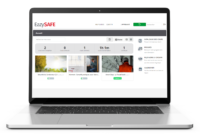First Aid For Choking Incidents
Introduction: Be Prepared to Act in a Choking Emergency
A choking incident can happen to anyone, anywhere, and often with little warning. It’s a frightening experience where a foreign object obstructs the airway, preventing breathing. Knowing how to respond quickly and effectively can be the difference between life and death. This guide provides essential information on first aid for choking incidents, empowering you to act confidently, whether at home, in public, or in the workplace. In Ireland, employers also have a duty to ensure the safety and health of their employees, which includes preparedness for such emergencies.
Overview: The Critical Importance of Immediate Choking Response & Workplace Responsibilities
When someone is choking, their brain is deprived of oxygen. Permanent brain damage can occur in as little as four minutes, and death can follow shortly after. Therefore, immediate action is paramount. Understanding the signs of choking and the correct first aid procedures is a vital skill for everyone.
In Irish workplaces, the Safety, Health and Welfare at Work Act 2005 places a responsibility on employers to ensure, so far as is reasonably practicable, the safety, health, and welfare at work of their employees. This includes providing adequate first aid facilities and personnel. Ensuring staff are trained in first aid, including how to handle choking incidents, is a key part of fulfilling this duty. Companies like EazySAFE can provide comprehensive first aid training tailored to meet these workplace requirements.
Key Steps in Choking First Aid

Recognizing the Signs of Choking:
Identifying choking is the first crucial step. A person who is choking may:
– Clutch their throat (universal sign of choking)
– Be unable to speak, cough, or cry
– Have difficulty breathing, or noisy breathing/gasping
– Turn blue or dusky (cyanosis) around the lips, face, or fingernails
– Appear panicked
– Lose consciousness if the obstruction isn’t cleared
If the person can cough forcefully or speak, encourage them to keep coughing to clear the airway themselves. If they cannot, immediate action is needed.

First Aid for a Choking Adult (Conscious):
If an adult is conscious and unable to cough, speak, or breathe:
1. Ask “Are you choking?” If they nod yes, tell them you are going to help.
2. Give 5 Back Blows: Stand behind the person. Place one arm across the person’s chest for support. Bend the person over at the waist so that the upper body is parallel with the ground. Deliver five separate back blows between the person’s shoulder blades with the heel of your hand.
3. Give 5 Abdominal Thrusts (Heimlich Maneuver): Stand behind the person. Make a fist with one hand. Place the thumb side of your fist against the middle of the person’s abdomen, just above the navel and well below the breastbone. Grasp your fist with your other hand. Perform quick, upward and inward thrusts.
4. Alternate: Continue alternating 5 back blows and 5 abdominal thrusts until the object is dislodged, the person can breathe or cough forcefully, or they become unconscious.

First Aid for Choking Children (Over 1 Year) and Infants (Under 1 Year):
For Children (Over 1 Year): The procedure is similar to adults (back blows and abdominal thrusts), but use less force appropriate for the child’s size. Kneel behind the child if necessary.
For Infants (Under 1 Year – Conscious):
1. Support the Infant: Sit or kneel and hold the infant face down along your forearm, supporting their head and jaw with your hand. The head should be lower than the chest.
2. Give 5 Back Blows: Deliver five firm back blows between the infant’s shoulder blades with the heel of your hand.
3. Give 5 Chest Thrusts: Turn the infant face up along your other forearm, supporting the back of their head. Place two fingers in the center of the infant’s chest, just below the nipple line. Give five quick chest compressions (thrusts), about 1.5 inches deep.
4. Alternate: Continue 5 back blows and 5 chest thrusts until the object is dislodged or the infant becomes unresponsive.
Never perform a blind finger sweep as it may push the object further down. Only remove an object if you can see it.

If the Person Becomes Unconscious:
If a choking adult, child, or infant becomes unconscious:
1. Carefully lower them to the floor or a firm, flat surface.
2. Call Emergency Medical Services Immediately: If not already done, shout for help and ensure emergency services (e.g., 999 or 112 in Ireland) are called. Specify that you have an unconscious choking victim.
3. Begin CPR (Cardiopulmonary Resuscitation): Start with chest compressions. Each time you open the airway to give breaths during CPR, look for the object in the mouth. If you see an object that can be easily removed, carefully remove it with your fingers. If you do not see an object, continue CPR.
4. Continue CPR until the object is removed and the person starts breathing on their own, or until professional help arrives.
Takeaways: Key Actions in a Choking Emergency

When to Seek Further Medical Attention:
Even if the object is dislodged and the person seems to be breathing normally, it’s important to seek medical attention.
– Always call emergency medical services (999 or 112 in Ireland) if the person becomes unconscious at any point.
– After any serious choking incident, even if the object is expelled, the person should be checked by a healthcare provider. Back blows or abdominal thrusts can sometimes cause internal injuries.
– If the person has a persistent cough, difficulty swallowing, or feels that something is still stuck in their throat, they need medical evaluation.
Prevention is also key:
cut food into small pieces, chew thoroughly, supervise young children while eating, and keep small objects out of reach of infants and toddlers. In the workplace, risk assessments should identify potential choking hazards and implement controls.
Recognize the Signs: Quickly identify if someone is choking and unable to breathe, cough, or speak.
Act Decisively (Back Blows & Abdominal/Chest Thrusts): For conscious adults and children over 1, provide cycles of 5 back blows and 5 abdominal thrusts. For infants, use 5 back blows and 5 chest thrusts.
Call for Help: If the person becomes unconscious or you cannot quickly relieve the obstruction, call Irish emergency medical services immediately (999 or 112).
Commence CPR if Unconscious: If the person loses consciousness, start CPR, checking for the object before giving breaths.
Arrange Medical Follow-Up & Ensure Workplace Review: After any choking incident where you have intervened, arrange for a healthcare professional to evaluate the person. In a workplace setting, ensure designated personnel report and review the incident according to your company’s safety procedures.
Conclusion: Empowerment Through Knowledge and Workplace Preparedness
Knowing first aid for choking is a skill that can save a life. For individuals, familiarise yourself and your family with these steps.
For businesses in Ireland, ensuring your staff are adequately trained is not just good practice but a part of your obligations under the Safety, Health and Welfare at Work Act 2005. EazySAFE offers a range of occupational first aid training courses, including those that cover choking emergencies, helping your organisation meet its legal duties and create a safer working environment. Investing in such training empowers your employees and demonstrates a commitment to their wellbeing.
We invite you to share your thoughts or any experiences related to choking first aid in the comments below. Your insights could help others be better prepared.

EAZYSAFE FIRST AID TRAINING
Discover EazySAFE’s accredited first aid courses to equip your workplace and meet Irish safety standards.

WORKPLACE SAFETY
Learn about preventing choking hazards and fulfilling your duties under Irish Health & Safety law.

IRISH EMERGENCY GUIDES
Access quick reference guides for various first aid emergencies, aligned with Irish protocols.
